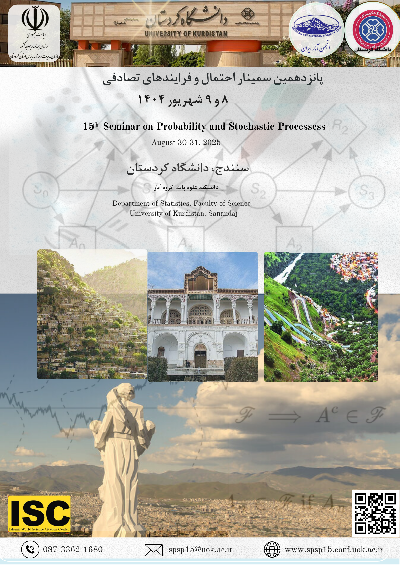:: Economic Performance of Forecasting Methods: Evidence from Energy Arbitrage Trading (Alessandro Fiori Maccioni)
Price forecasting is central to arbitrage trading, where profits depend on the ability to buy low and sell high. Traders must anticipate market movements to execute transactions that exploit temporal price differences.
For storage operators, maximizing arbitrage profits requires both predicting price peaks and timing buy-sell decisions accordingly, given the storage constraints. Effective arbitrage thus depends on accurately forecasting prices and translating them into optimal trading strategies.
While many forecasting methods have been proposed and assessed based on statistical accuracy, less attention has been paid to their actual impact on the economic performance of storage operations.
This study investigates whether specific forecasting models consistently lead to higher arbitrage revenues and examines how their economic value can be identified through appropriate evaluation metrics. Using data from the Italian day-ahead electricity market between 2020 and 2024, we evaluated the economic performance of several forecasting methods of various types, including singular spectrum analysis (SSA), SARIMA, random forests, and simple moving averages.
Each model was coupled with an optimization algorithm that scheduled battery charge and discharge operations based on forecasted prices, computed the resulting arbitrage profits, and enabled a direct comparison of financial outcomes under identical market and system constraints.
Results indicate that univariate SSA consistently outperformed all other models in delivering arbitrage profits. Over the five-year horizon, SSA achieved average profits equal to 98\% of the theoretical maximum, with annual values never falling below 97\%. This strong performance stemmed from SSA’s ability to extract dominant price patterns while maintaining low forecast error. However, this accuracy required substantially greater computational resources than any other method considered. Despite this, SSA’s advantage remained robust across battery configurations, retraining schedules, and when accounting for realistic cost factors such as efficiency degradation and transaction fees.
In contrast, simpler models---particularly the 30-day moving average and standard ARIMA, SARIMA, and random forest---also performed well, yielding between 87.8\% and 90.5\% of the perfect-foresight benchmark. These models required minimal tuning and offered considerable operational efficiency. Notably, more granular and computationally intensive variants of random forest did not translate higher forecast accuracy into increased profits, likely due to their limited ability to capture key market features such as price oscillations, intraday ordering, and local extrema. This highlights that greater statistical accuracy does not necessarily lead to better economic outcomes, and that model complexity must be balanced against practical deployment considerations.
To further investigate the link between predictive accuracy and realized profit, we compared each method’s financial performance with standard forecast accuracy metrics. Interestingly, methods with the best statistical performance did not consistently yield the highest profits. This suggests that conventional accuracy metrics may be insufficient for evaluating the economic value of price forecasts. To address this gap, we proposed and tested an alternative metric, called multistep, which proved more effective in estimating profit potential and identifying the most suitable forecasting model for energy storage operations.
Our study contributes to the literature by linking predictive model performance to realized economic outcomes in an operational setting. It demonstrates that univariate SSA, despite its computational demands, consistently yields the highest arbitrage profits in a real-world application. At the same time, simpler forecasting models---such as pooled ARIMA configurations and moving averages---proved economically competitive, suggesting that model selection for applied forecasting should consider not only statistical accuracy but also the end-use context. These findings point to a broader methodological implication: standard forecast evaluation metrics, such as RMSE, may not adequately reflect the financial outcomes of arbitrage trading. We show that profit-maximizing decisions often depend more on a model’s ability to capture structural features of the price series---such as local extrema, intraday ordering, and oscillatory behavior---than on minimizing forecast error alone. To address this, we propose and validate an alternative evaluation metric that better aligns with economic performance. Our results highlight the need for forecast evaluation criteria tailored to decision-oriented contexts, providing a way for quantitative researchers to improve model assessment in applied settings.


برگزاری کارگاه آموزشی در زمینه ریاضیات مالی
عنوان کارگاه:
کاوشی عمیق در مدلسازی تصادفی در بازارهای مالی: از مبانی نظری تا شبیهسازی استراتژی معاملاتی
زمان برگزاری کارگاه روزهای:
شنبه 8 شهریور ساعت 13:40-12:30
یکشنبه 9 شهریور ساعت 13:40-12:30
نحوه ثبت نام :
متقاضی باید وارد سامانه کاربری خود شود و از طریق منوی کارگاههای آموزشی بر روی گزینه ثبت نام اولیه کلیک کنید. پس از تایید ثبت نام شما بوسیله مدیر سایت، ثبت نام نهایی میشود
برای مشاهده جزئیات بیشتر اینجا کلیک کنید.
فایل های مورد نیاز
نمایه شدن در ISC و CIVILICA

پوستر همایش

استان کردستان
دانشگاه کردستان
دانشکده علوم پایه
© کلیه حقوق این وب سایت محفوظ می باشد .


